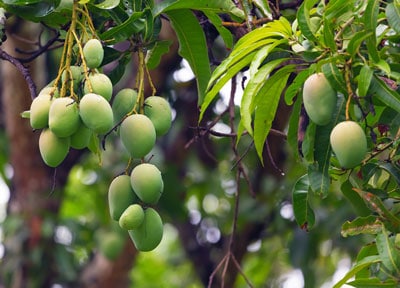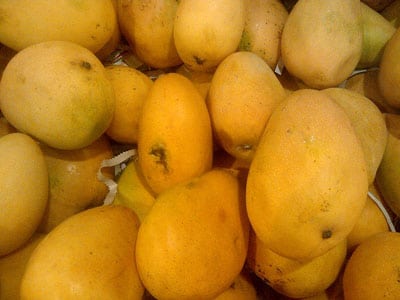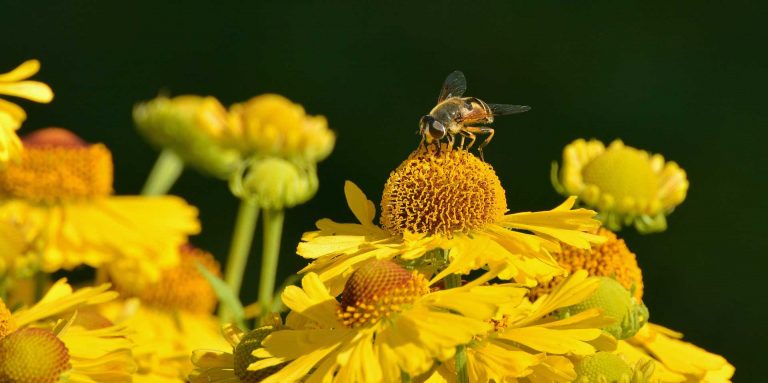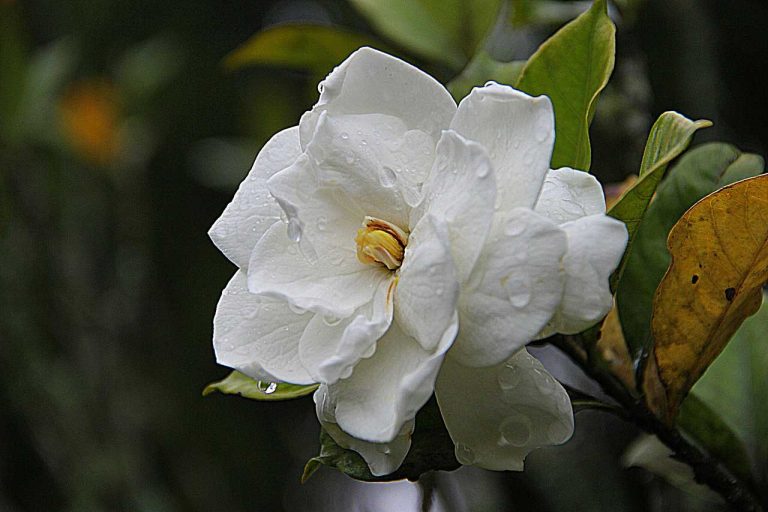Mango Tree
Scientific classification
| Kingdom: | Plantae |
| (unranked): | Angiosperms |
| (unranked): | Eudicots |
| (unranked): | Rosids |
| Order: | Sapindales |
| Family: | Anacardiaceae |
| Genus: | Mangifera |
| Species: | M. indica |
Mango is the national fruit of the Philippines, Pakistan, and India. It is also the national tree of Bangladesh. In many cultural activities like public celebrations, in weddings for floral decorations, and other religious ceremonies, this fruit, and its leaves are used regularly.
Anatomy
The roots of the mango tree grow deep into the soil, they are evergreen throughout and grow as tall as 90 feet high and 80 wide. The foliage of the mango tree is simple with alternate leaves in a lanceolate shape. At the tender stage, they are as long as 12 to 16 inches, with colors of yellow-green, copper color or purple. When developed, the foliage attains a structure which is leather-like, dark green in color and silky. Fresh leaves are seen many times yearly, as flushes in terminal growth. The panicle flowers in the form of pyramids on the terminal branches when fully developed, bear many hundreds of white colored flowers of almost one-fourth of an inch when blossomed. Most of the flowers perform as males bearing pollen, however, few are bisexual that bear fruits. Pollination occurs through bees, wasps and flies.
The color and size of the ripened fruit differ. The harvested ones bear orange, yellow, green or red colors, with a solitary flat oblong pit likely to attain a hairy or fibrous surface, which never separates quickly from the pulp. The mangoes that are ripe and not peeled emanate a perfect resinous, sweet odor. Within the pit at a thickness of 1 to 2 mm (0.039 to 0.079 in.) there is a lining enclosing a solitary seed, which is of length 4 to 7 mm (0.16 to 0.28 in.). The embryo of the plant is within the seed.
Habitat
The general type of mangoes called Mangifera Indica, grow on the world’s biggest fruit trees. The mango tree inhabits the Northeast parts of India. Mangos were described by the Hindus as early as 4000 B.C. Mangoes were in control in India and by 400 B.C. they spread to the Eastern side of Asia. By the 10th century, they were harvested in the East of Africa, later on, in the 15th century, they spread to the Philippines. In the 16th century, the traders of Portugal, carried the mangoes to their colonies of Brasilia and Africa.
GROWING AT HOME

Photo by: Amar Chandra
Soil for Planting
Mangoes grow well on a variety of soils, like loamy sand to red clay. They favor a soil of pH 5.5 to 7.5. The best type of fruit and its production is obtained from very rich soil. A soil that is properly drained is recommended. Besides for the prevention of water logging, sites that are reasonably sloping are suggested. Long taproots are obtained through deep soils with no impermeable layers, this helps to withstand the wind.
Planting
A plan for planting your mango tree in warm weather is not good as the growth is not lively. While removing it from a container, the best way is to lance the container in which it is, and make a hole, 2 or 3 times the width of the container. The hole should not be deeper than the root ball’s length. Place the tree with care vertically in the hole and pack soil round the root ball, slowly pressing it. The air pockets if any are removed by thorough watering. For reducing the competition of weeds and for the conservation of moisture, apply a mulch of organic material in 2 to 3 inch layers.
In order to allow the roots to establish themselves firmly, transplant those in the containers in time.
Mix triple superphosphate (0 -45-0) fertilizer with the soil in the hole you are planting the mango tree. Till the plant is free from the transplanting shock, never add any other fertilizer. Mango trees are very big, as such plant them at distances of 35 to 40 ft, apart.
Watering
Mango trees do not require special care. Thoroughly water the tree so that the deep tap roots get enough water. Prior to repeated watering ensure that the surface of the soil is dry. Two months before blossoming, do not water, then continue watering once the tree starts to blossom.
Do not deprive the tender mango trees of water. In case there is a shortage of rainfall, apply irrigation water once a fortnight in the initial years, and in the coming year, supply water every three weeks, and thereafter, monthly once. Developed trees produce more, in case there is a shortage of irrigation water for a minimum of two months prior to blossoming. Even though hot, arid conditions favor the production of fruits, a Good yield is obtained if irrigation is provided in between flowering and harvesting.
After planting, in case there is a shortage of water lower than 25 mm (1 in.) in a week, water your mango tree 3 – 4 days for the initial 4 months after it has set.
Temperature and Humidity

Mango is best suited in hot weather where the leeward locations are arid where the rainfall is less than 60 inches yearly. However, for the best yield in those locations, provide additional irrigation. Both developing fruits and flowers are destroyed by anthracnose diseases where it is humid and the rainfall is high.
The apt zones for growing mango trees are where the temperature does not fall below 40°F.
Flowering and Maturing
In case you grow mango trees by planting seedlings, then it takes 6 – 8 years for bearing fruit and if by grafting, it takes the usual time for developing, which is within three years. Summer season is when it bears and it starts blossoming, following a cold winter spell.
Care
The production of fruits will increase when the weather is arid at blossoming time. The flowers are destroyed by the wind, reducing the yield. Protect your mango trees from wind, avoid wind breaks which that provide shade.
When the tree is 4 years old, prune it by discarding the delicate stems by providing a strong scaffolding of the branches. After that, prune just for the purpose of discarding the diseased or broken branches.
Nurturing requires observing diseases and entry of pests. Whenever they are seen, either spray pesticides, horticultural oils or control them biologically.
Divide the yearly requirement of fertilizers into 3 or 4 applications; apply them prior to growth expecting flushes.
Pest and Pesticides
Besides cold winter, anthracnose fungus is the greatest risk in growing mango trees in Florida. This fungal disease is observed as black spots on the leaves, and also on the stems. It is liable to affect the tender fruits and panicles in particular. Choose the types that have resistance to anthracnose; however, this does not give a solution to the problem. Those types that are resistant to anthracnose will frequently grow very healthily in the absence of the black spots on their foliage or stems; however, tender fruits and flowers are affected by it. Do not wait for this “black death “to occur on your panicles. Treat the developing trees prophylactically with elemental sulfur, copper sulfate or neem oil weekly once till the fruit has acquired its full size. Scale is another usual pest. In turn, examine below the leaves. The presence of sooty mold on the leaf, black in color is also a sign of attack by insects. Sooty mold will not affect the plant on its own. However, it resides on the sugars (honey dew) that are excreted from the insects. These scale insects are managed by neem oil, pyrethrins and insecticidal soap.
Harvest Month and Storage

Photo by: Tahir Mq
Mango trees are productive for over 40 years. The harvesting time is normally when the fruits are orange, red or yellow in color. Mangoes become ripe and are picked when the inside fruit becomes yellow in color, irrespective of the outside color. The harvesting period is normally from June to September in Hawaii, based on the type. Following flowering, the fruit matures in 3 to 5 months.
Pick the mangos before they are completely ripe, when they become soft and fall. In order to prevent it from damaging, handle it with care, since they get it bruised. The fruits become ripe at room temperature and are then refrigerated. The mangos that are refrigerated at 50 to 55 degrees F, remains more or less fresh for 2 to 3 weeks.
Varieties
In India we find many varieties of mangoes, Alphonso (otherwise called ‘Hapoos’), ‘Bangalore,’ ‘Amrapali’ ‘Neelam’ and so on.
Uses of Mango Tree wood
The demand for sustainable “green” products is increasing by the day and many furniture manufacturers are looking to mango wood to meet their requirements of manufacturing good quality furniture. Through fierce arguments are always raging on the subject of usurping sustainability for luxury, mango wood, though a fairly new entrant to the commercial field is becoming a favorite among the designers, makers and clients for its hardiness and sustainable features. Due to the large demand for the mango fruits, there has been a great proliferation of mango trees, which after its fruit bearing days, are used for its wood to manufacture furniture and other items, especially because they come in large sizes that are easy to shape. The furniture manufacturers love mango wood for its strong structure and dense grains that facilitate the manufacture of furniture, even though as a hardwood it is a soft wood. The close-knit structure of this wood is accentuated by its special, unusual type of close grains. Another great advantage is that its diversity allows it to take on any kind of staining and colors, ranging from dark brown like rosewood color or the lighter shades of teak, and sometimes they even stain it to colors like green and pink.

Having discovered a fondness for insects while pursuing her degree in Biology, Randi Jones was quite bugged to know that people usually dismissed these little creatures as “creepy-crawlies”.







